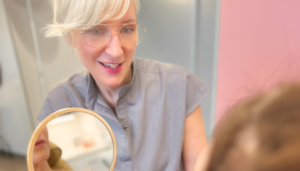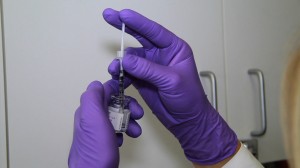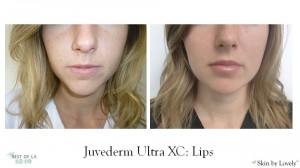Camas, WA
Injectables
Skin Rejuvenation
Hair Restoration & Growth
Shop By Category
 The answer to this question varies. People pay more or less for a Juvederm treatment depending on their geographical locations. You will be charged more to have this procedure done by a very experienced licensed injector. Those who just started to perform this treatment tend to charge less. Lastly, the type of gel the nurse injector uses helps to determine the price.
The answer to this question varies. People pay more or less for a Juvederm treatment depending on their geographical locations. You will be charged more to have this procedure done by a very experienced licensed injector. Those who just started to perform this treatment tend to charge less. Lastly, the type of gel the nurse injector uses helps to determine the price.
The cost of Juvederm also depends on the type of filler you have chosen to receive. You could have Juvederm Ultra XC, Juvederm Ultra Plus XC, Juvederm Vollure XC, Juvederm Vobellea XC, Juvederm Voluma XC or Juvedern Volux XC! The filler used will depend on your desired outcome and treatment area. Juvederm Ultra and Ultra Plus will last between nine and 12 months, but the results of Juvederm Voluma and Volux can last as long as two years, so fewer injections will be required.
In general, Juvederm treatments range from $600 to $1,200 per syringe. If your wrinkles are not very severe, your certified nurse injection specialist will not need to use a large amount of gel. Therefore, the price will be lower for you than for someone who needs two syringes to treat deep laugh lines. If you do need a second injection, you may be able to receive it at a discount.
Facial changes that occur as you age can have a dramatic effect on your self-esteem, but dermal fillers like Juvederm can help restore the confidence you’ve lost. Juvederm is an injectable form of a substance called hyaluronic acid, which occurs naturally in skin tissue. As you get older, your hyaluronic acid levels gradually drop, and this results in a loss of skin structure and volume. Juvederm injections, when performed by a licensed injector, help correct age-related loss of skin volume. While originally formulated to treat areas around the cheeks, nose and mouth, Juvederm can also be used to add volume to the tear trough area under your eyes where dark circles and bags appear. The increase in volume gives your eyes and face a younger and firmer appearance.
A topical anesthetic cream is usually sufficient to numb the eye area before a Juvederm injection is performed. If more advanced techniques are necessary, an infraorbital block can also be used to completely prevent pain. Possible side effects from injections include local redness, tenderness, swelling, bruising, itching and lumpiness. In most cases, side effects are mild, and resolve in a week or less. Ice therapy may help lessen symptoms during your recovery period. In general, the positive effects of Juvederm treatments last from six months to a year. If you are displeased by your results, your certified nurse injection specialist can inject an enzyme solution called hylaronidase to help reduce or reverse the effects of the procedure by accelerating the breakdown of hyaluronic acid.
Juvederm is a form of hyaluronic acid gel, which is injected under the skin to correct wrinkles. It corrects moderate and deep wrinkles for up to one year. As a form of sugar that occurs naturally in the body, it leaves your skin feeling smooth and youthful. While there is the possibility of some side effects, most are mild.
Possible Side Effects Of Juvederm
Most people who reported side effects after Juvederm injections experienced bruising, tenderness, redness, itching or swelling. The side effects are typically short-lived. These are a few more possible side effects:
Who Is At Risk?
Not all people experience side effects from Juvederm. In a clinical study, more than 70 percent of participants were pleased enough to come back for subsequent treatment. If you have a history of severe allergies, you should discuss this with our certified injection specialists. Also, be sure to discuss any prescriptions or over-the-counter medications you take. If you are taking immunosuppressive therapy, you must discuss this with us.
The best way to minimize the possibility of side effects is to follow our nurse injectors’ instructions. Also, avoid sun exposure, strenuous exercise and alcohol for at least 24 hours after injections. For Juvederm injections in Portland, Oregon, Santa Monica, California or nearby areas, contact us today.
Juvederm and Restylane are popular, effective dermal fillers. They are used for adding fullness to lips, reducing  wrinkles in the face and giving new life to tired skin. If you’re considering any of those treatments, you’re probably wondering how these two wrinkle fillers compare to each other.
wrinkles in the face and giving new life to tired skin. If you’re considering any of those treatments, you’re probably wondering how these two wrinkle fillers compare to each other.
Both products are accepted by the FDA, and both are non-animal stabilized hyaluronic acid (NASHA) gel solutions. They offer safe, natural-looking results with little to no risk of an allergic reaction.
Restylane has a few different versions that are used for different aesthetic procedures. Deep facial wrinkles and creases can be treated with the version that is composed of larger gel microspheres. Smaller wrinkles around the lips or eyes are removed with a Restylane version that has smaller gel particles. The larger particles produce the longest lasting results.
Juvederm also has a few versions for use in various situations. Juvederm, however, has a smoother texture than the Restylane microspheres, so it works better on very fines lines around the lips.
Both products are administered by nurse injectors on an outpatient basis. Juvederm is slightly less expensive than Restylane. Restylane has been on the market longer than Juvederm, but Juvederm is growing in popularity. The results for both fillers last 6 to 12 months.
Restylane and Juvederm are safe, effective, non-allergenic and competitively priced. Neither one has a significant advantage over the other. Your choice depends on your cosmetic needs and the condition of your skin. Ask your licensed injector which of the two is right for you.
The U.S. Food and Drug Administration approved the use of Juvederm as an injectable filler to treat wrinkles and creases on the skin. Juvederm is manufactured in a range of formulations to allow nurse injectors to tailor the delivery of the product based on the patient’s specific condition.
Juvederm formulations are based on hyaluronic acid prepared as a smooth gel for ease of use as an injectable filler. Hyaluronic acid is a sugar that occurs naturally in the human body, but levels are depleted due to aging and sun exposure. Hyaluronic acid-based injectables work by retaining water at the targeted sites to plump up volume and smooth out surface skin.
Juvederm comes in various formulations so that use of the products can be customized to address each patient’s unique skin condition. Some patients may require only one injection to correct moderate lines. Effects may last from nine to 12 months.
As an FDA-approved formulation, Juvederm conforms with pre-set standards for regulated products. Effects vary from one patient to the next because each person has unique skin characteristics. Trust someone’s feedback if they have actually submitted to Juvederm fillers of any type. Without being pushy, ask to see their before and after photos.
Websites that provide reviews of clinics and professionals such as certified nurse injectors are reliable sources because effective delivery of Juvederm takes training and experience. In the hands of a skilled nurse injector, Juvederm works wonders.
As an alternative, the manufacturer’s website also provides a gallery of before and after screen shots along with tips and a virtual visualizer app.

If you want fuller, natural-looking lips, you can have them with Juvederm injections. The procedure is relatively painless, safe, and it requires no down time.
Juvedern (Allergan) is a sterile gel composed of hyaluronic acid, a natural sugar that’s present in the skin. Juvederm is one of the safest dermal fillers on the market.
Juvederm lip treatments can last for up to nine months, but you will need periodic maintenance treatments to maintain the effect.
Will I see Immediate Results?
The effect is immediate, but it can take a day or so to see optimal effects. Many patients are very pleased with the initial effect, but find that the results get even better after a few days.
Are the Treatments Painful?
You will receive a topical anesthetic prior to treatment. This will minimize any pain and keep you comfortable during the procedure.
When can I Resume Normal Activities?
Most patients return to daily activities immediately with no downtime. However, to be on the safe side, it’s a good idea to get your treatment a day or two before any important social events.
Must I Take Special Precautions?
You should abstain from aspirin, ibuprofen, Exedrin, Advil and Aleve for one week prior to treatment and for two days after your procedure. Also, avoid Vitamin E and St. John’s Wort for three days before and three days after a treatment. Do not get Juvederm lip treatments if you are pregnant or nursing.
Juvederm consists of hyaluronic acid, a natural substance that binds water with cells. It’s used to fill in facial lines and works especially well for lip augmentation. The results are soft and natural-looking, and the effect can last for up to one year.
This facial filler comes in two formulations: Juvederm Ultra and Juvederm Ultra Plus. Both formulations fill in wrinkles and thereby create younger-looking skin. Juvederm Ultra works well for mild to moderate wrinkles, while Juvederm Ultra Plus is best for wrinkles that are moderate to severe.
Radiesse is a dermal filler consisting of calcium-based microspheres suspended in a water-based gel. Like Juvederm, Radiesse is used to fill in facial wrinkles. It’s also an excellent filler for contouring the face and correcting facial asymmetries, especially those in the chin, cheeks and jaw.
When used for contouring, Radiesse replenishes lost facial volume and reduces moderate to severe lines that run from the nose to the lips. It can also be used to reshape the chin, jaw and cheekbones. Because Radiesse stimulates natural collagen production in the body, the results can last for as long as two years.
These fillers can be as effective as facelifts in creating a youthful appearance. With Radiesse especially, the results can be remarkable. That’s because Radiesse can be molded, shaped and contoured after the injection to deliver a look that’s both lifted and smoothed.
Both products are very safe and do not cause allergic reactions. Side effects are usually limited to some mild bruising and swelling for the first day after treatment. There is no downtime, and patients can resume daily activities immediately after treatment.
Juvederm and Restylane are brands of injectable dermal fillers that contain hyaluronic acid. They can both help restore your youthful appearance by plumping up certain areas of your facial skin. A certified nurse injection specialist chooses a dermal filler product based on your desired results and the type of line or facial area being targeted. Unwanted features commonly modified by dermal fillers include marionette lines, deep wrinkles and creases that form around the nose and mouth. While both Juvederm and Restylane work in a similar way, there are a few differences between them.
Concentration and Duration of Results
Juvederm contains a higher concentration of hyaluronic acid. However, Restylane syringes hold a larger volume of the product. Restylane results usually last for about six months. Juvederm results are less predictable and are generally expected to last between three and six months.
Product Consistency and Suitability
Juvederm has a smoother consistency under the skin, so it’s the filler of choice for your lips. It’s also more practical for areas that need to be molded after injection. Restylane tends to stay where it’s injected, so it’s the best choice for areas like hollow under-eye spaces.. Although it’s harder to mold, Restylane is less likely to spread into areas where it’s not needed or desired.
Possible Side Effects
Either product can produce redness, swelling and discoloration in the injection area. Juvederm side effects are generally milder and usually resolve after the first 24 hours; you may experience Restylane side effects for several days.